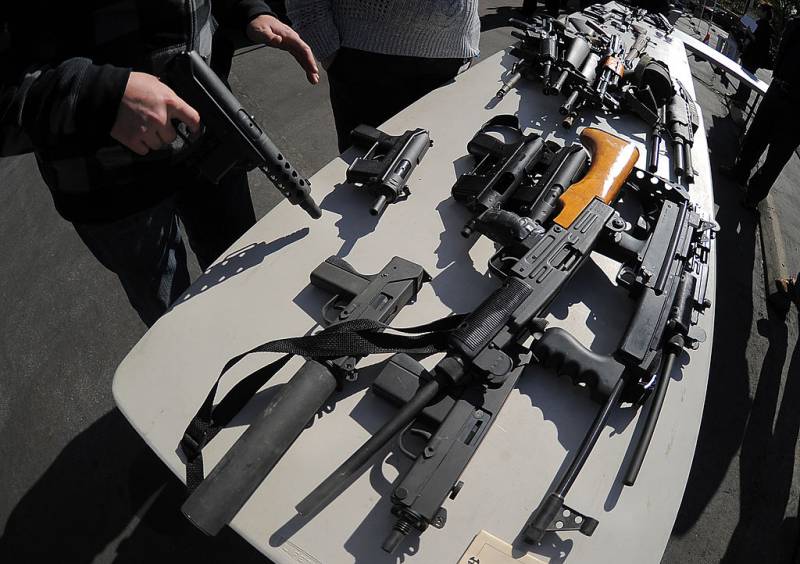State Democratic leaders were quick to lambast the ruling as a none-too-subtle effort to get the issue before the conservative-leaning U.S. Supreme Court. Gov. Gavin Newsom, among others, slammed the judge as a puppet of gun rights groups.
“Judge Benitez is a stone-cold ideologue,” he said at a news conference Thursday at the San Francisco General Hospital and Trauma Center. Flanked by California Attorney Rob Bonta, San Francisco Mayor London Breed and anti-gun violence advocates, Newsom called the judge “a wholly owned subsidiary of the gun lobby and the National Rifle Association.”
At the briefing, Bonta announced his move to appeal the ruling, calling it “disturbing and troubling and of great concern.” He said he also intends to ask the U.S. 9th U.S. Circuit Court of Appeals to extend a hold on the decision throughout the entire appeals process.
“The ban on assault weapons will not put an end to gun violence, but is one important tool the state has to protect the safety of Californians while also respecting the rights of law-abiding residents who choose to possess firearms,” Bonta said.
During an hour-long KQED radio special this week on gun control and gun violence, hosted by Marisa Lagos and Katie Orr, Bonta said the judge's decision runs contrary to six previous federal court rulings upholding assault weapons bans.
“Not only do I disagree with the court's ruling, the overwhelming weight of the federal courts that have addressed this issue disagree with this judge's ruling,” he said.
Benitez is no stranger to California lawmakers: The state is already appealing both his 2017 ruling against its nearly two-decade-old ban on the sales and purchases of magazines holding more than 10 bullets, and his ruling last year blocking a 2019 state law requiring background checks for anyone buying ammunition.
Despite those challenges, Bonta said, California has passed and upheld some of the most important “common sense” gun laws in the nation, yielding one of the lowest levels of gun deaths, per capita.
Indeed, while gun violence claims the lives of roughly 3,000 Californians each year — the state, which has among the nation’s strictest gun laws — ranks 44th nationwide in per capita firearms deaths, according to the Centers for Disease Control and Prevention.
“And so our assault weapons ban in California has been a cornerstone of our regime here to keep California safe for over three decades,” Bonta said.
But Benitez and other critics of California’s assault weapons ban argue that the target is misguided.
“I think the point the judge is trying to get across is that among the guns that are most dangerous, it's not these rifles, it’s handguns,” said Josh Blackman, a law professor at South Texas College of Law Houston, noting that more than half of gun deaths in California are suicides. Handguns are “far more dangerous than the AR-15 [semi-automatic rifle] in terms of total number of deaths and woundings. AR-15s are not used for suicides. It's very hard to shoot yourself with a rifle.”
The assault-style weapons typically used in mass shootings, Blackman said, draw the most public attention, but are far from the biggest concern.
“These guns are not responsible for a large share of gun deaths, but they're scary and they're useful for marketing purposes” for gun control groups, he said. “The issue of mass shootings captures the national zeitgeist. But if we can be candid for a moment, it's a very, very small percentage of gun deaths.”
That's an argument that Bonta and many other gun control advocates bristle at, particularly in the aftermath of horrific incidents like the one two weeks ago in San Jose.
“I think, statistically minimizing mass shootings does not really recognize the horror and the devastation of them and the fear that they create,” Bonta said.
“I mean, these are things, mass shootings, that are happening in everyday places, in schools and workplaces, in churches and movie theaters," he said. “And people are afraid to do everyday things because they think they can be a victim of mass shootings.”
Bonta said California’s gun control policies have proven effective in significantly reducing firearm deaths in the state. But he noted that more needs to be done, particularly in minimizing other types of gun deaths.
While he stopped short of advocating for any new state legislation, Bonta told KQED he planned to better promote and enforce existing rules that are too often underutilized, including the state’s so-called red flag law, which allows family members and police officers to ask a court to take firearms away from those believed to be a risk to themselves or others.

